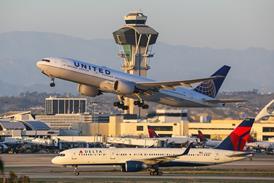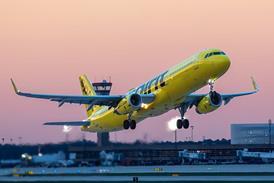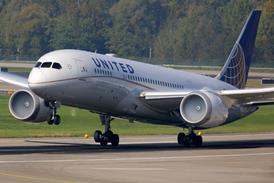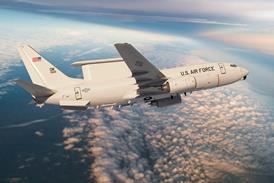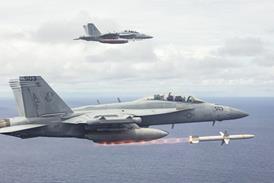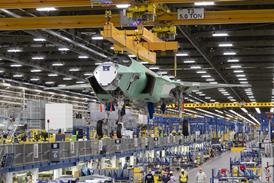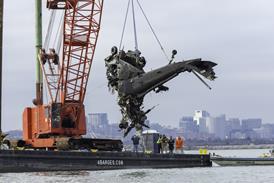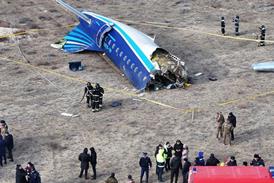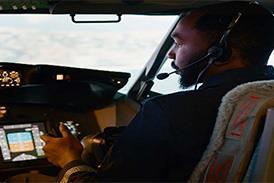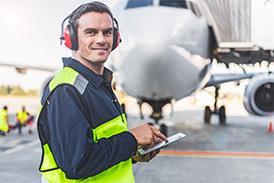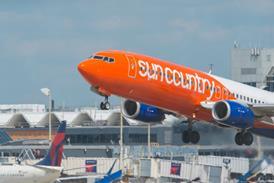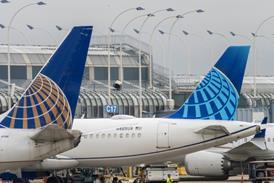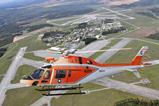As Boeing begins production work on the first prototype of the US Air Force’s planned fleet of E-7A Wedgetail airborne early warning and control jets, the service is exploring what advanced technologies it may incorporate into the final design.
These could include more advanced sensors, GPS alternatives for navigation, new electronic warfare countermeasures and communications upgrades.
Of particular note, the USAF is expressing an openness to replacing the E-7A’s signature Multi-role Electronically Scanned-Array (MESA) radar– the powerful dorsal-mounted sensor that is critical to the aircraft’s mission of detecting, tracking and targeting both airborne and maritime targets.
A solicitation released by the USAF on 15 April calls on industry to submit ideas for the integration of new or advanced capabilities for the E-7 platform, singling out interest in a possible successor to the Northrop Grumman-made MESA radar installed on existing Wedgetail jets.
“The Government is interested in identifying industry partners to provide cutting-edge capabilities and technologies, potentially to include an advanced sensor (MESA replacement)…” the formal Request for Information notes.
Such RFIs are issued by Pentagon contracting offices to help them assess the range of technological capabilities already available or under development. Responses to RFIs are used to help shape the eventual technical requirements for an acquisitions programme.
The USAF selected the E-7 to replace its ageing fleet of Boeing E-3 Sentry jets in 2022. A year later in 2023, Northrop confirmed it would be providing MESA sensors for the planned fleet of 26 Wedgetails.
“The multifunction MESA sensor will provide the US Air Force with critical multi-domain awareness to enable decision superiority for the range of mission requirements today and into the future,” Ed Griebel, vice-president of airborne surveillance programmes for Northrop, said at the time.
Northrop declines to comment on the recent E-7 RFI, including whether or not the company is developing a successor to the current MESA system, citing the open nature of the programme.

Airframer Boeing has already begun work on assembling the first of two E-7s covered under a USAF rapid prototyping programme, which will proceed the formal acquisition programme along with a final design for the commercial derivative aircraft.
A 737-700 fuselage that will be converted into the first USAF E-7 arrived at Boeing’s 737 assembly facility in Renton, Washington in January. Once assembled later this year, that airframe will be delivered to Boeing’s defence unit to be modified with full military capabilities.
A contract for the E-7 prototyping effort was finalised in 2024, which the air force says is valued at just over $2.5 billion. The service expects to make a production decision advancing its Wedgetail programme in fiscal year 2026, with the two prototype jets delivered in fiscal year 2028.
The 15 April RFI pertaining to E-7 enhancements notes the air force plans to initiate the early-stage Engineering and Manufacturing Development phase of the acquisition programme in FY2027 to “develop and integrate an advanced sensor and potentially other capabilities onto the baseline E-7 platform.”
Those other capabilities being looked at by the service include improved electronic warfare protection systems, digital communications and GPS-denied navigation systems.
To incorporate the selected capabilities, the USAF says it will explore the possibility of retrofitting existing E-7s, producing an updated E-7 design, or some combination of the two.
The RFI also make vague mention of some other “equivalent” to the E-7, perhaps a reference the older E-3 or to the new class of uncrewed fighters being developed by the Pentagon.
Washington expects to field its first prototype E-7 by 2027 and the full 26-aircraft fleet by 2032.
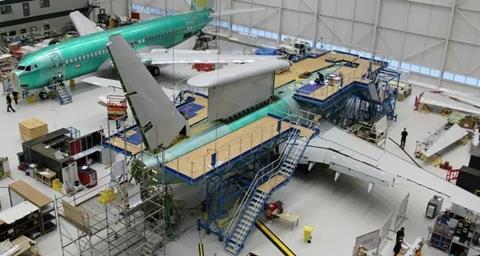
In a recent interview with FlightGlobal, the Royal Australian Air Force praised the E-7’s operational performance, especially during a six-month deployment to Germany in 2024 supporting NATO efforts to track potential aerial threats from Russia.
“It’s been an excellent platform for us,” RAAF Squadron Leader Daniel Dobbin told FlightGlobal.
Dobbin gave a particularly favourable review of the capabilities offered by the Wedgetail’s MESA radar, saying it is “difficult to understate” the degree of improvement between the E-7 and its ancestor the E-3.
Australia was the first country to acquire and field the E-7, with six examples now in service. Canberra’s fleet has logged more than 7,000 combat flight hours, the bulk of which came in the Middle East supporting the US-led campaign in Iraq to defeat the Islamic State terrorist group from 2014 to 2020.
During that effort, Canberra says individual E-7 crews regularly managed more than 80 aircraft in an assigned battle area.
The UK and NATO headquarters have also signed on to field their own Wedgetail fleets, alongside the USA. Turkey and South Korea already operate the twin-engined jet, each with four examples in service.


